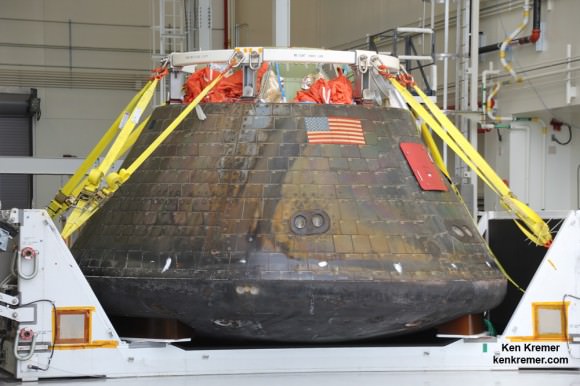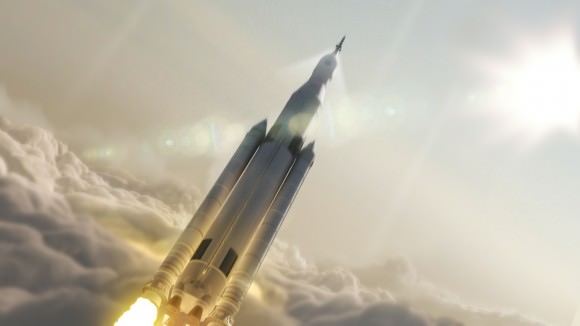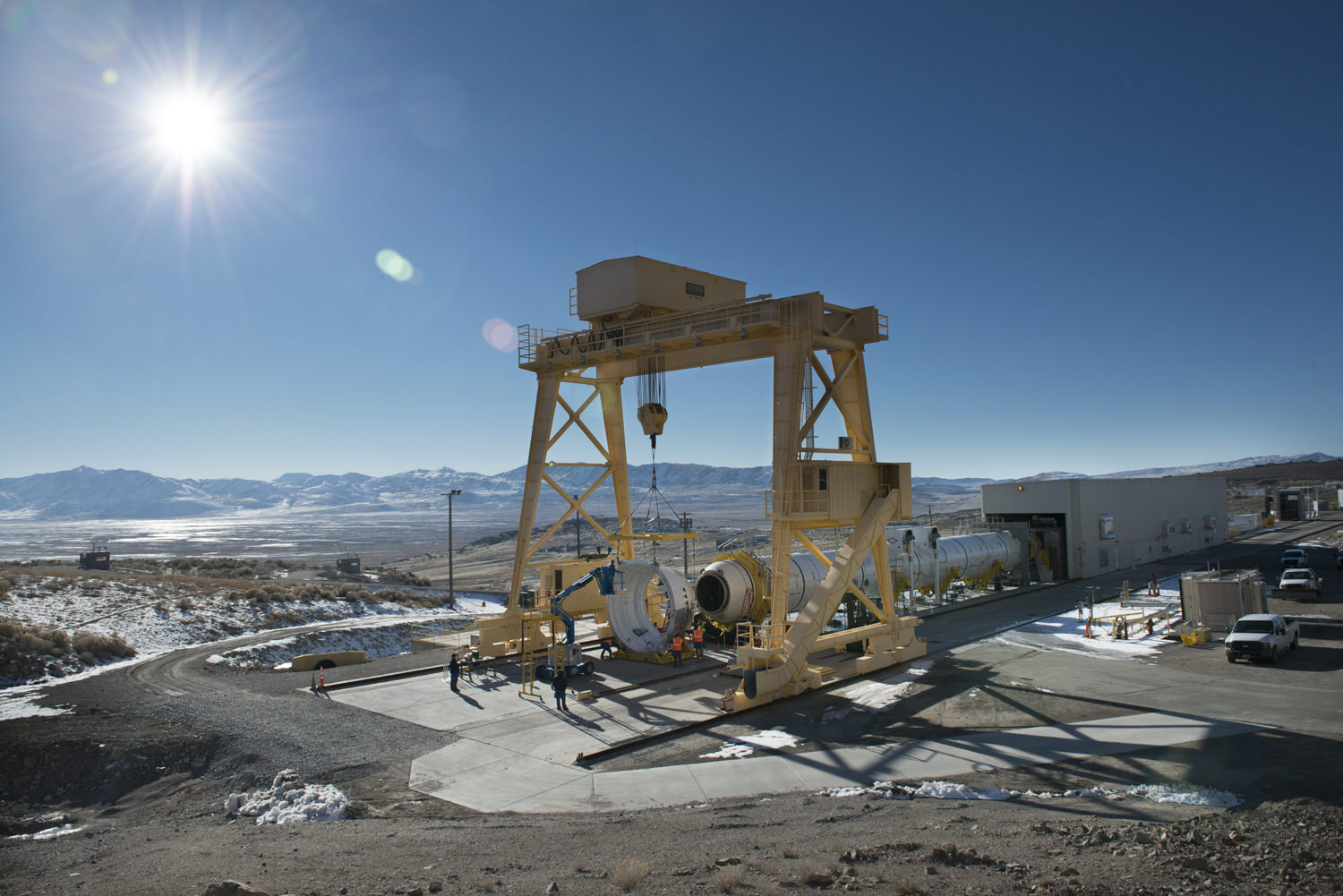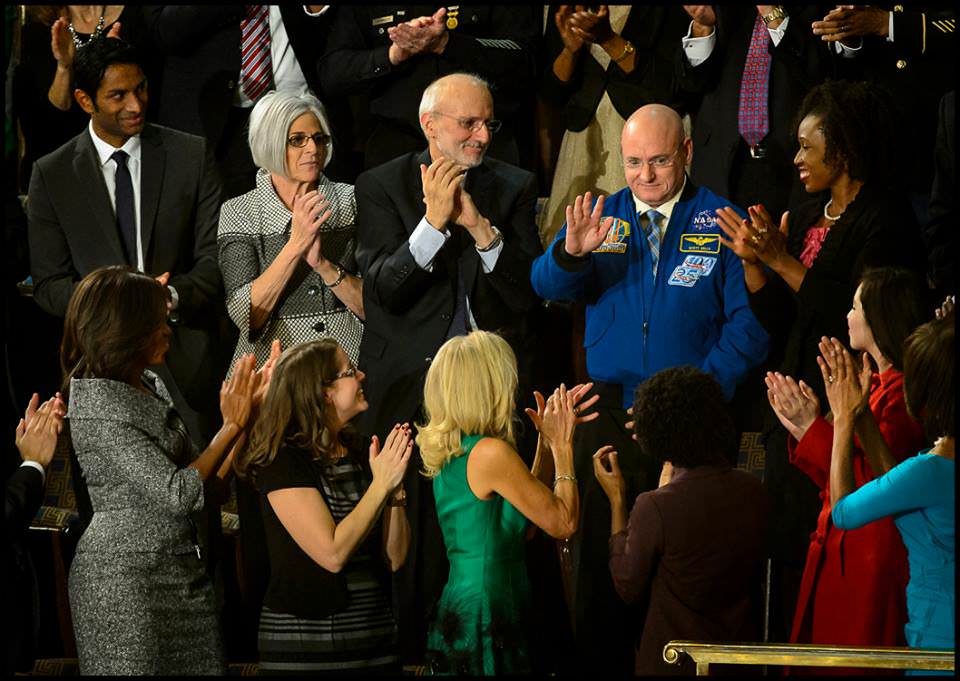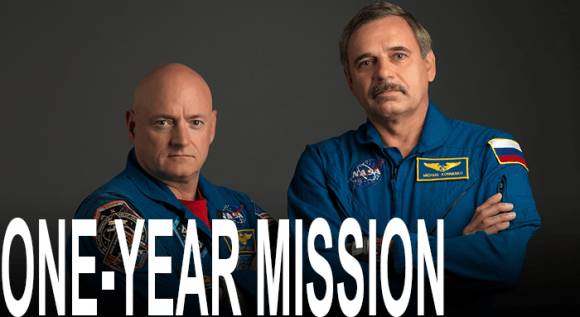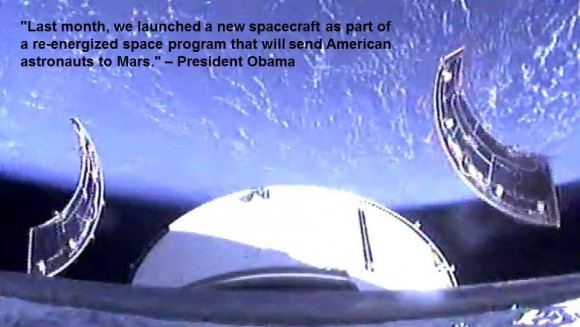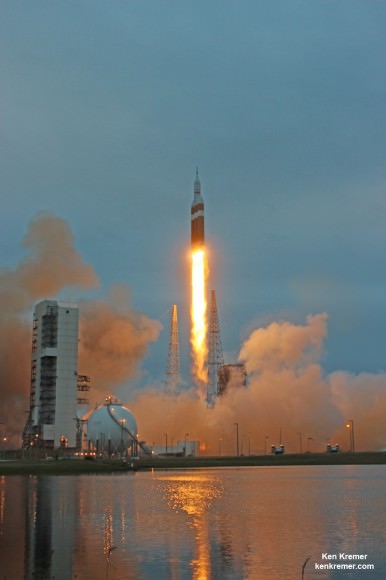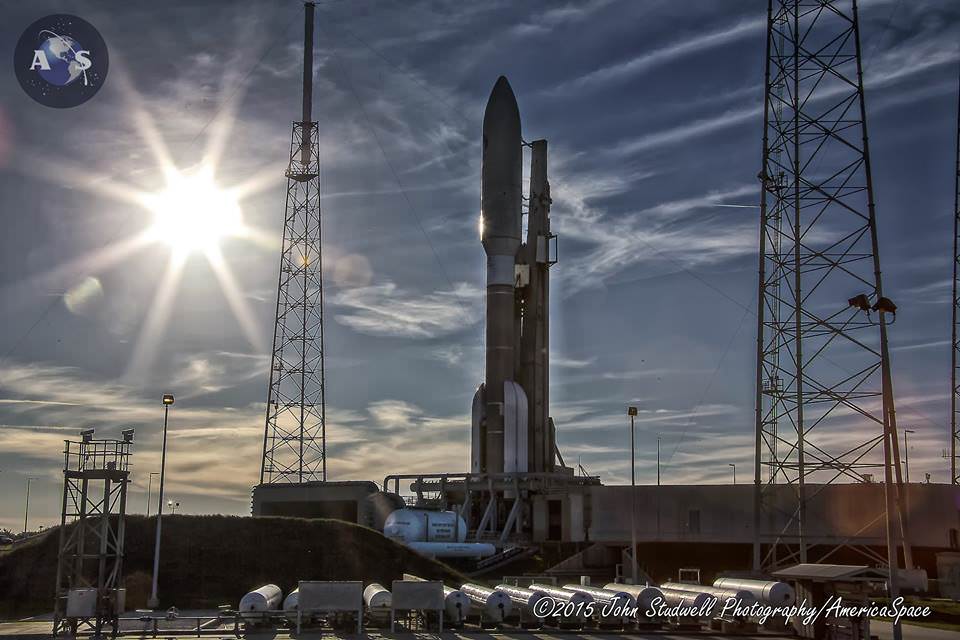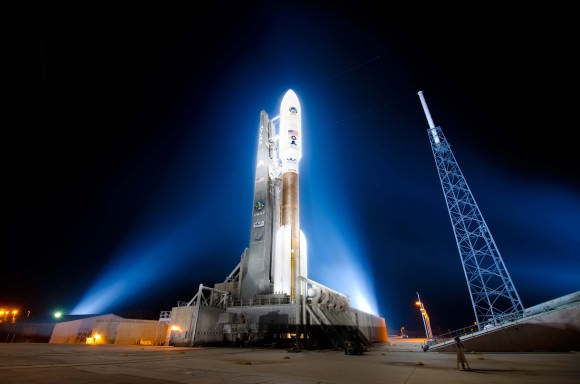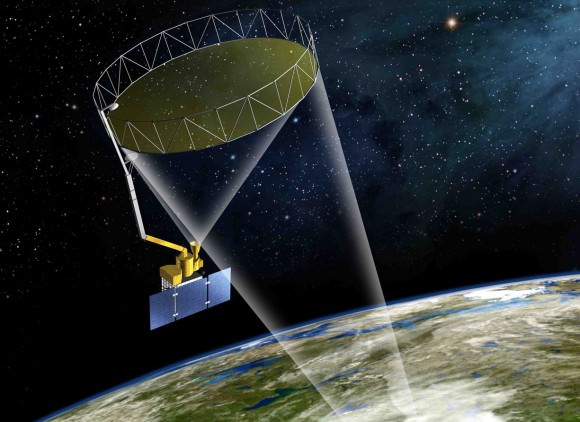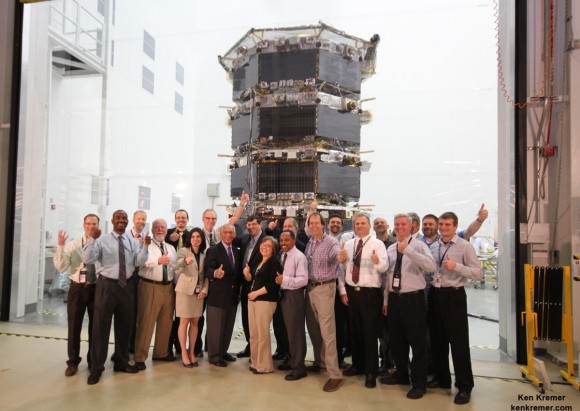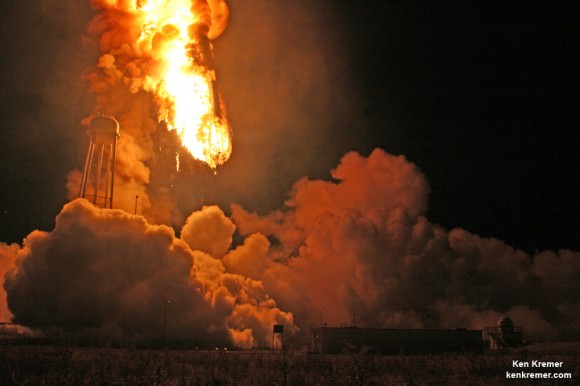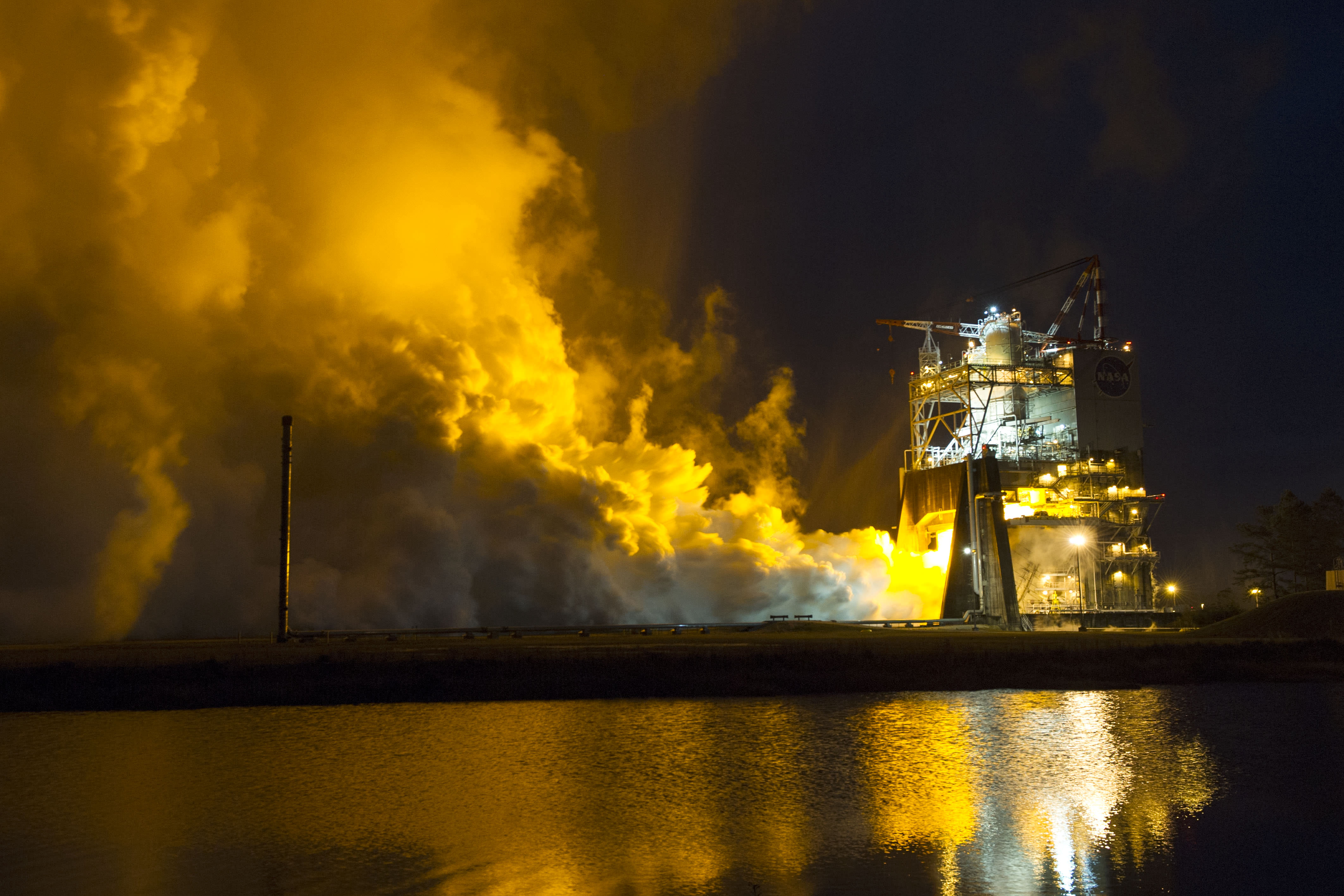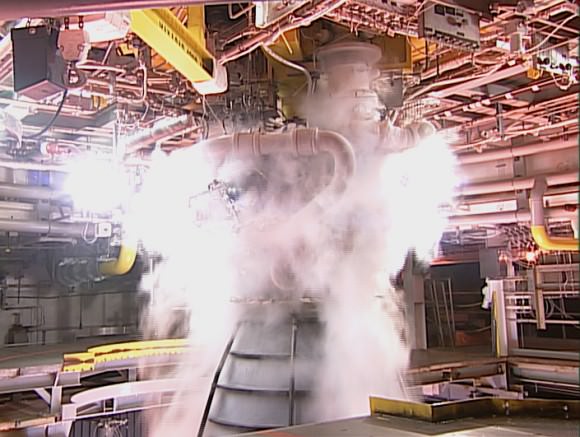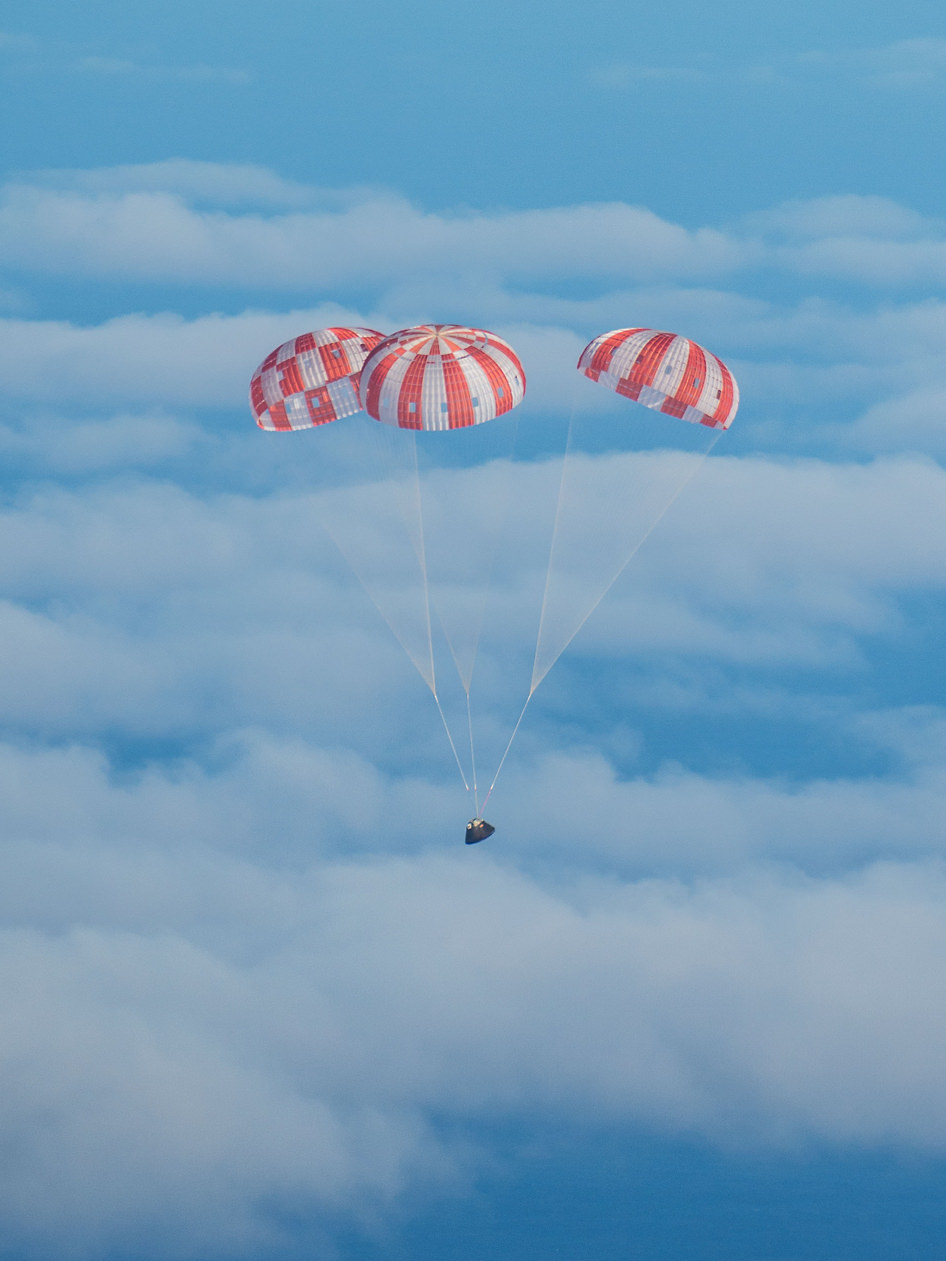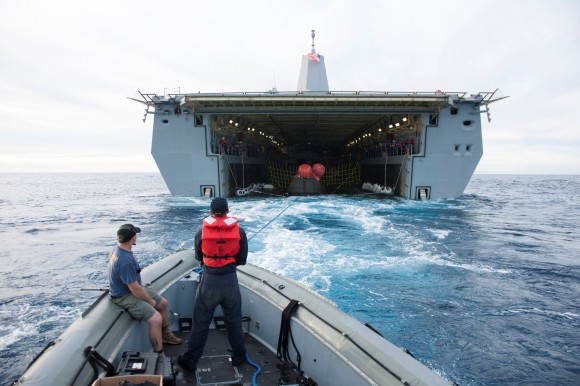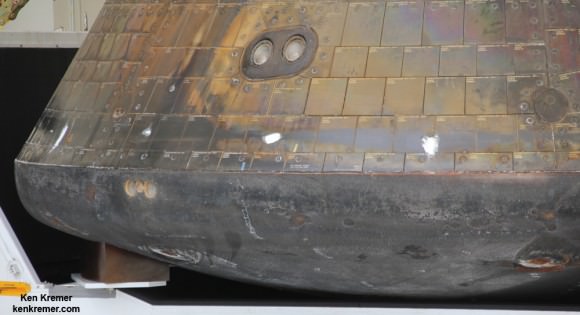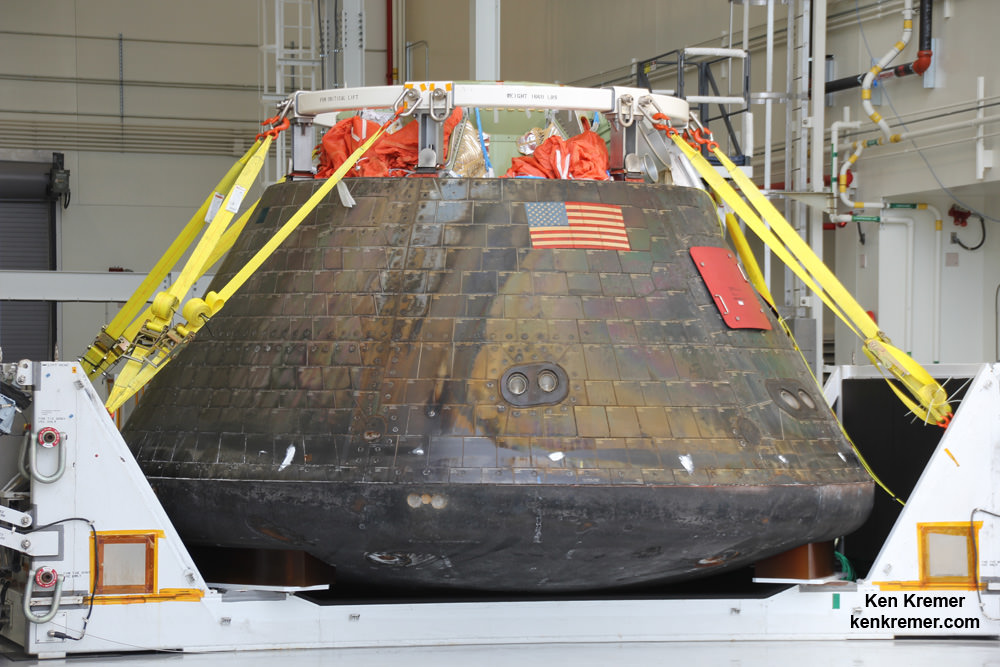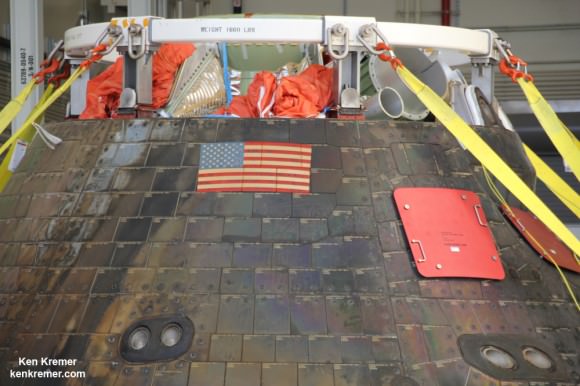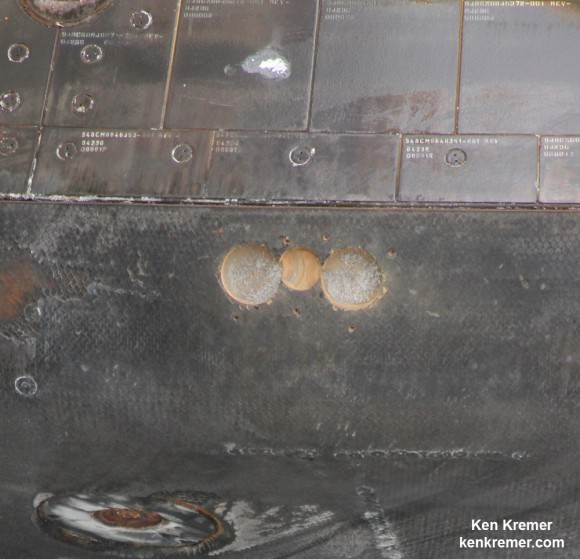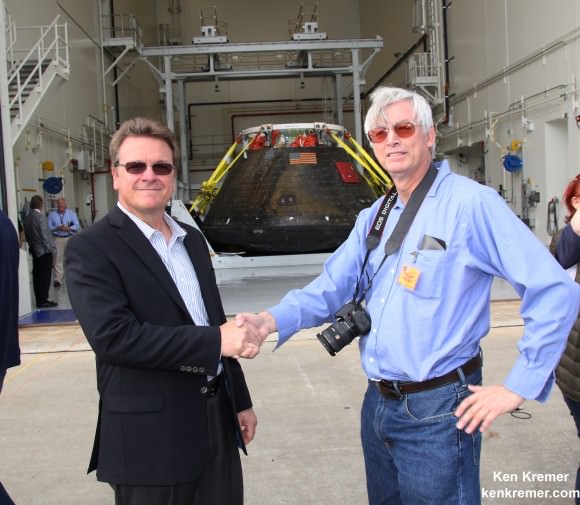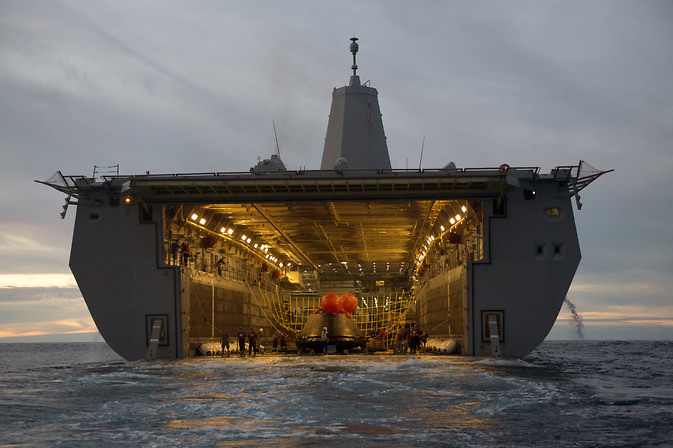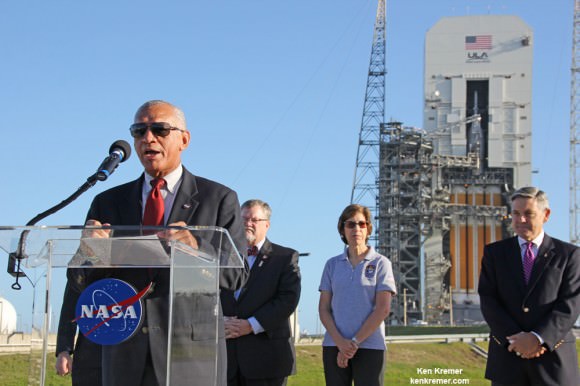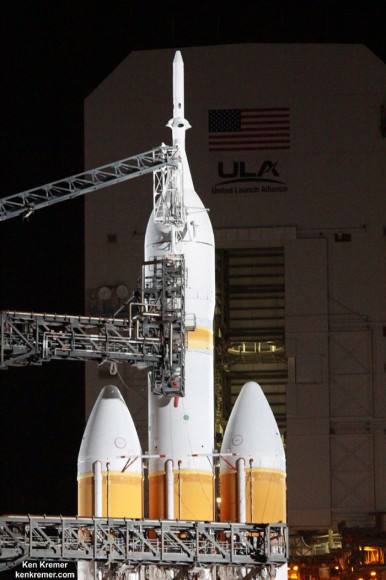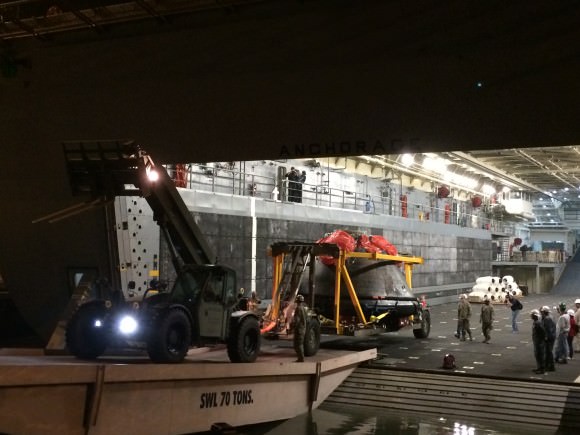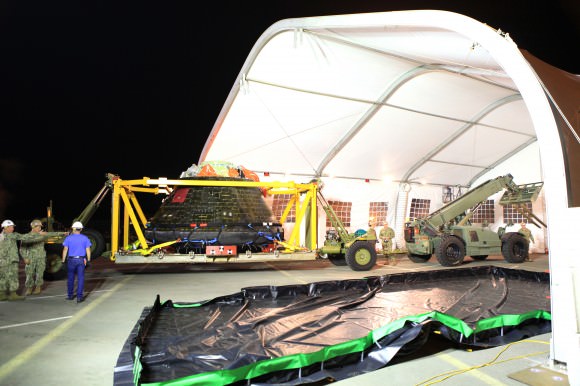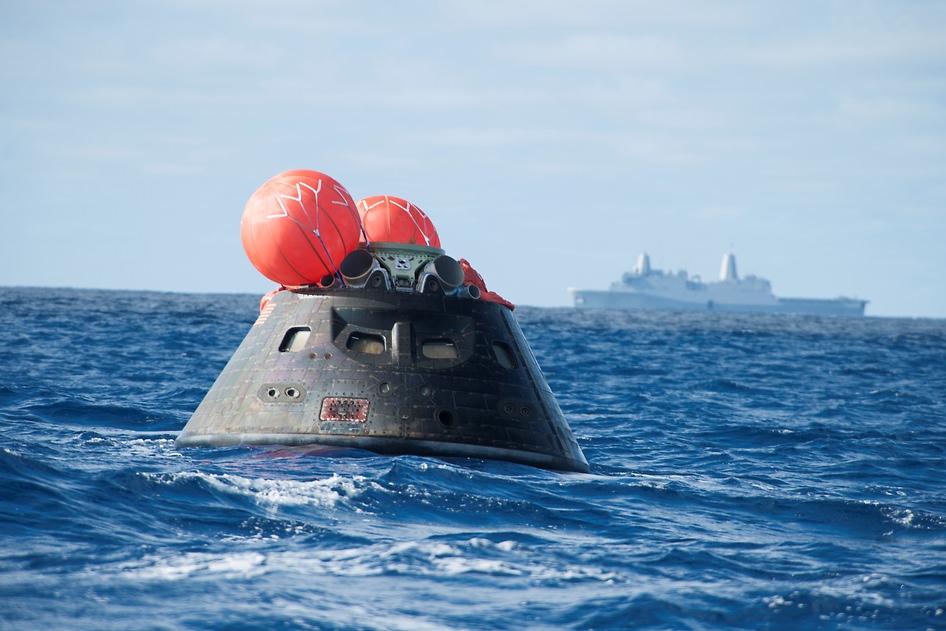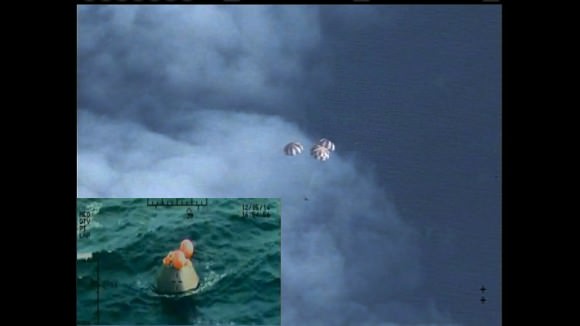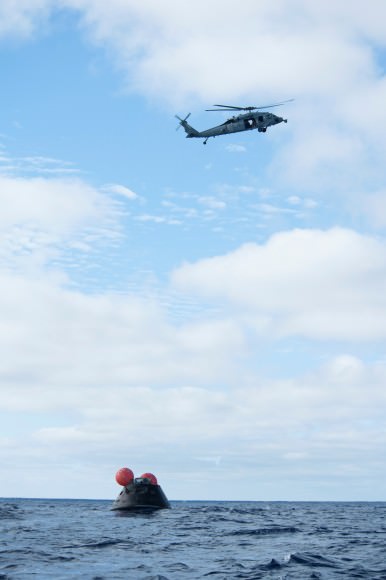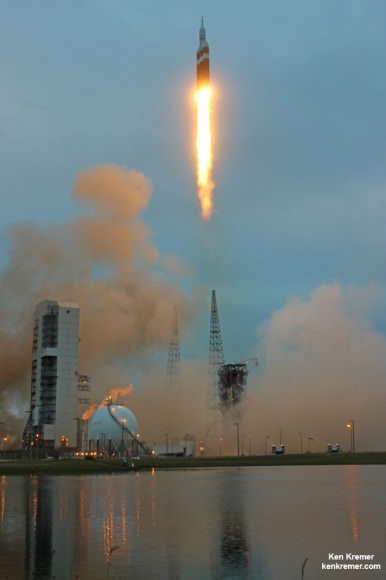The first solid rocket booster qualification motor for NASA’s mammoth new Space Launch System (SLS) rocket is aimed and ready to fire in a major ground test after NASA and ATK finished its installation at a test stand in Utah, and confirms that the pace of SLS development is gaining momentum.
The booster known as qualification motor, QM-1, is the largest solid rocket motor ever built and will be ignited on March 11 for a full duration static fire test by prime contractor ATK at the firms test facility in Promontory, Utah.
The two minute test firing of the full scale booster marks another major milestone in NASA’s ongoing program to assemble and launch the new SLS, which is the most powerful rocket ever built in human history.
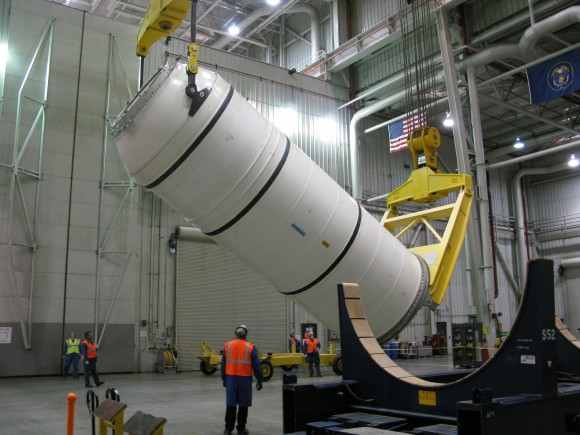
The QM-1 booster is being conditioned to 90 degrees and the static fire test will qualify the booster design for high temperature launch conditions. It sits horizontally in the test stand and measures 154 feet in length and 12 feet in diameter and weighs 801 tons.
The five-segment booster will produce 3.6 million pounds of maximum thrust.
The first stage of the SLS will be powered by a pair of the five-segment boosters and four RS-25 engines that will generate a combined 8.4 million pounds of liftoff thrust and is designed to propel the Orion crew capsule to deep space destinations, including the Moon, asteroids and the Red Planet.
“With RS-25 engine testing underway, and this qualification booster firing coming up, we are taking big steps toward building this rocket and fulfilling NASA’s mission of Mars and beyond,” said SLS Program Manager Todd May.
“This is the most advanced propulsion system ever built and will power this rocket to places we’ve never reached in the history of human spaceflight.”
NASA’s goal is to launch humans to Mars by the 2030s.
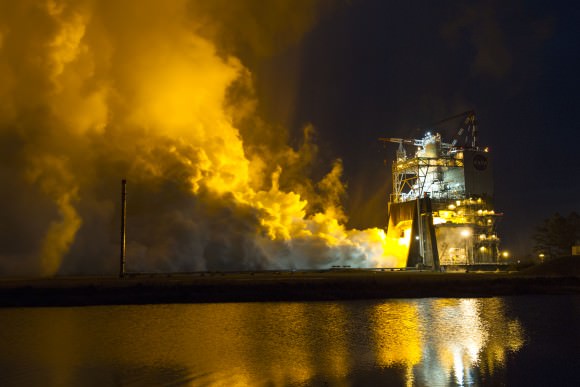
The boosters and RS-25 engines were originally developed for NASA’s space shuttle program and are being modified and enhanced for NASA’s new SLS rocket.
The original shuttle-era boosters were made of four segments.
“Testing before flight is critical to ensure reliability and safety when launching crew into space,” said Charlie Precourt, vice president and general manager of ATK’s Space Launch division.
“The QM-1 static test is an important step in further qualifying this new five-segment solid rocket motor for the subsequent planned missions to send astronauts to deep space.”
The static fire test will collect data on 103 design objectives as measured through more than 534 instrumentation channels on the booster as it is firing. It is being preheated to 90 degrees Fahrenheit to measure the boosters performance at high temperatures and confirm it meets all necessary structural and ballistic requirements to launch astronauts.
The test will evaluate motor performance, acoustics, motor vibrations, nozzle modifications, insulation upgrades and avionics command and control performance. The full-scale motor test will further improve the safety, technology and knowledge of solid rocket motors, according to ATK.
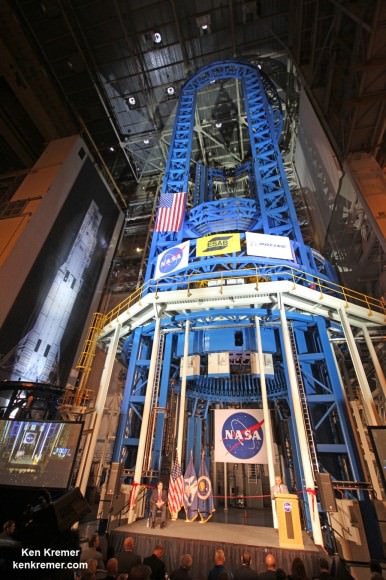
The first SLS hot fire test of an RS-25 was successfully completed on Jan. 9 with a 500 second long firing on the A-1 test stand at NASA’s Stennis Space Center near Bay St. Louis, Mississippi, as I reported – here.
The SLS core stage is being built at NASA’s Michoud Assembly Facility in New Orleans.
On Sept. 12, 2014, NASA Administrator Charles Bolden officially unveiled the world’s largest welder at Michoud, that will be used to construct the core stage, as I reported earlier during my on-site visit – here.
The maiden test flight of the SLS is targeted for no later than November 2018 and will be configured in its initial 70-metric-ton (77-ton) version with a liftoff thrust of 8.4 million pounds. It will boost an unmanned Orion on an approximately three week long test flight beyond the Moon and back.
NASA plans to gradually upgrade the SLS to achieve an unprecedented lift capability of 130 metric tons (143 tons), enabling the more distant missions even farther into our solar system.
The first SLS test flight with the uncrewed Orion is called Exploration Mission-1 (EM-1) and will launch from Launch Complex 39-B at the Kennedy Space Center.
Orion’s inaugural mission dubbed Exploration Flight Test-1 (EFT) was successfully launched on a flawless flight on Dec. 5, 2014 atop a United Launch Alliance Delta IV Heavy rocket Space Launch Complex 37 (SLC-37) at Cape Canaveral Air Force Station in Florida.
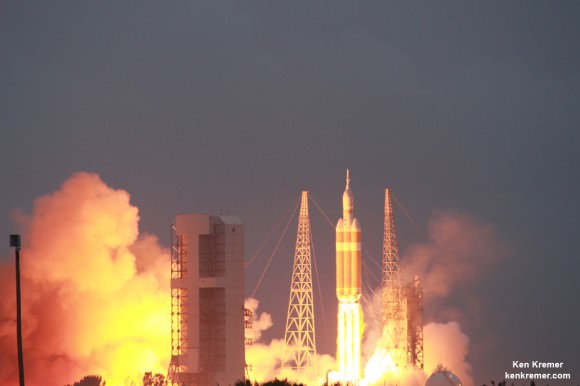
Stay tuned here for Ken’s continuing Earth and Planetary science and human spaceflight news.
